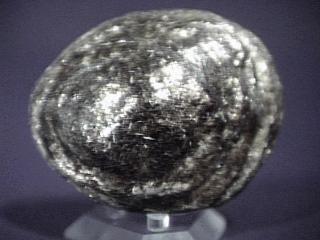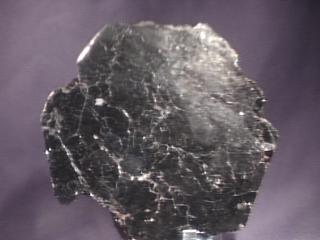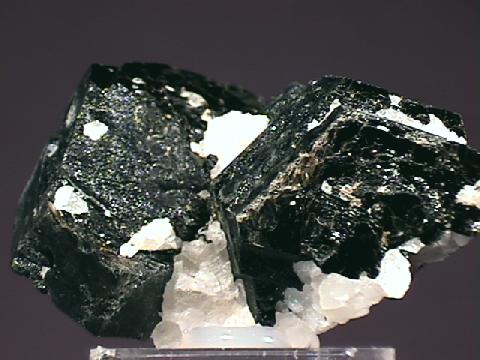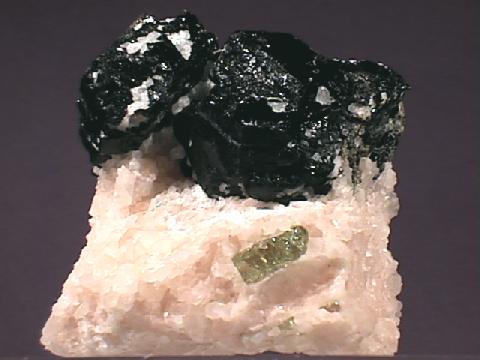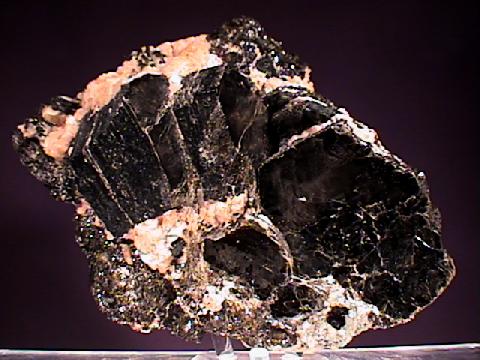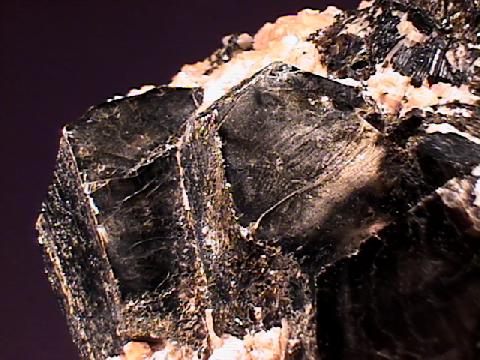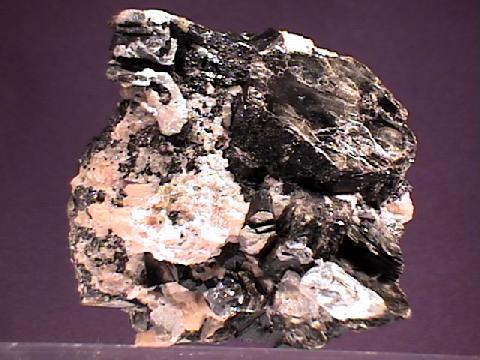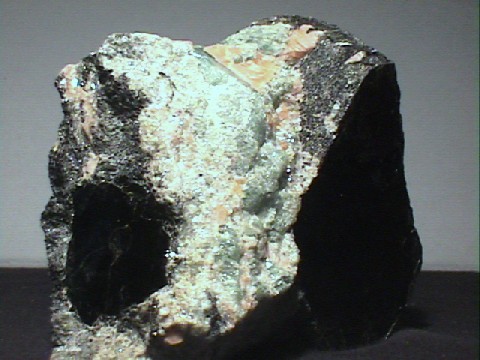 THE MINERAL BIOTITE
THE MINERAL BIOTITE
- Chemistry: K (Fe, Mg)3 AlSi3 O10 (F, OH)2, Potassium iron magnesium aluminum silicate hydroxide fluoride.
- Class: Silicates
- Subclass: Phyllosilicates
- Group: Micas
- Uses: heat insulator for industrial purposes.
- Specimens
Biotite is a common rock forming mineral, being present in at least some percentage in most
igneous and both regional and contact metamorphic rocks.
The typical black to brown color of biotite is characteristic although it is difficult to distinguish brown biotite from dark brown phlogopite.
The two are actually end members in a series that is dependent on the percentage of iron.
Phlogopite is iron poor and biotite is iron rich.
The darker color and density increase with an increase in the iron content.
Biotite tends to form in a wider range of conditions than phlogopite which is limited mostly to ultramafic rocks and magnesium rich marbles and pegmatites.
Biotite, like other micas, has a layered structure of iron magnesium aluminum silicate sheets weakly bonded together by layers of potassium ions.
These potassium ion layers produce the perfect cleavage.
Biotite is rarely considered a valuable mineral specimen, but it can accompany other minerals and compliment them.
In Bancroft, Ontario Biotite forms large crystals with green apatite and hornblende.
Single large plates or "books" of biotite can grow to considerable size and can make impressive mineral specimens.
Weathered tiny crystals of biotite can appear golden yellow with a nice sparkle producing a "fool's Gold" that has fooled many.
PHYSICAL CHARACTERISTICS:
- Color is black to brown and yellow with weathering.
- Luster is vitreous to pearly.
- Transparency crystals are transparent to translucent.
- Crystal System is monoclinic; 2/m
- Crystal Habits include tabular to prismatic crystals with a prominant pinacoid termination.
Biotite's four prism faces and two pinacoid faces form pseudo-hexagonal crystal "books".
The sides of the crystal often tend to tapper and can have a "hard candy that has been sucked on, look".
Also as lamellar or granular rock forming masses providing the luster for most schists and gneiss.
- Cleavage is perfect in one direction producing thin sheets or flakes.
- Fracture is not readily observed due to cleavage but is uneven.
- Hardness is 2.5.
- Specific Gravity is approximately 2.9 - 3.4+ (slightly above average)
- Streak is white.
- Associated Minerals are quartz, feldspars, apatite, calcite, hornblende, garnets and schorl.
- Other Characteristics: cleavage sheets are flexible and elastic, meaning they can be bent and will flex back to original shape.
- Notable Occurrences include Bancroft and sudbury, Ontario; Sicily; Russia and many other locallities around the world.
- Best Field Indicators are crystal habit, color, cleavage, elastic sheets and associations.
 THE MINERAL BIOTITE
THE MINERAL BIOTITE
